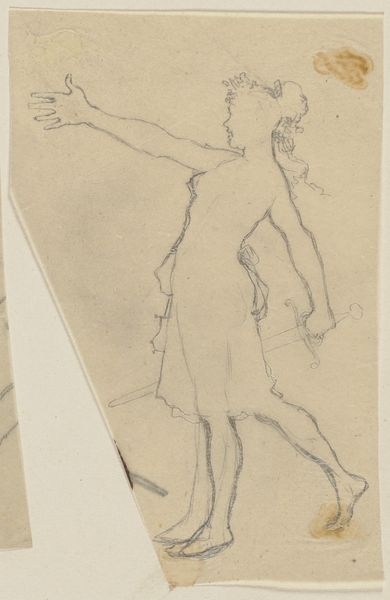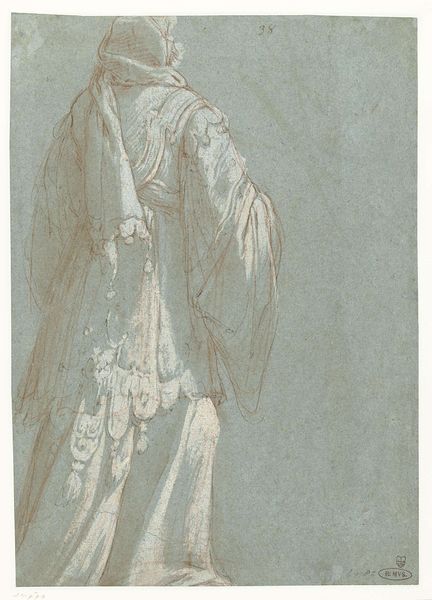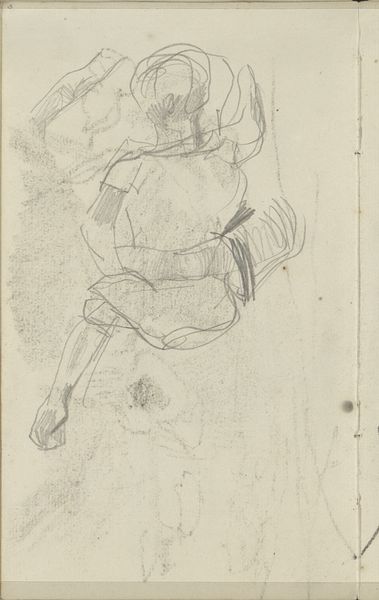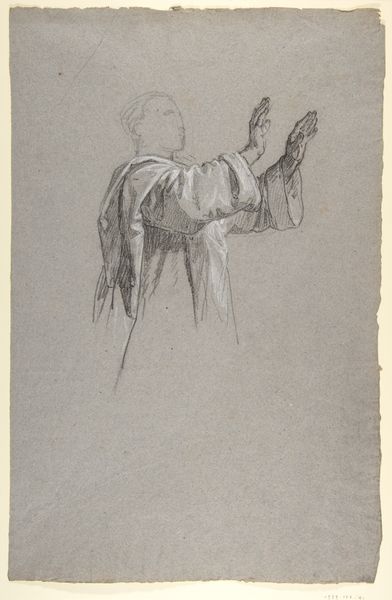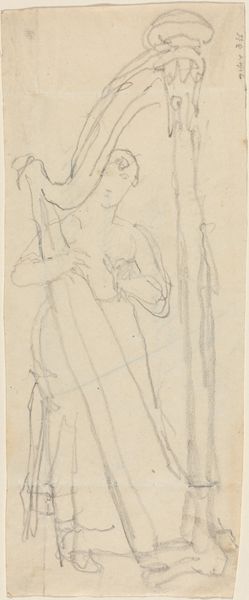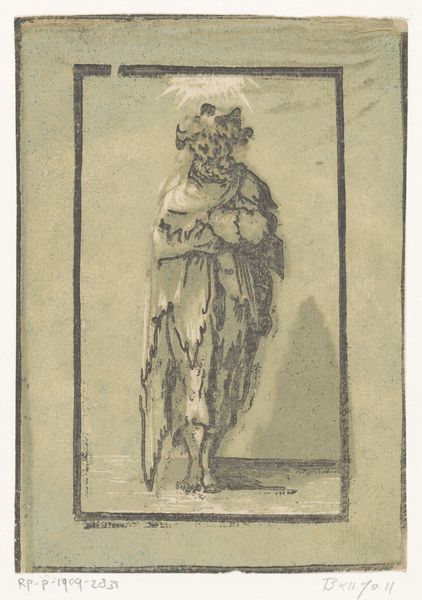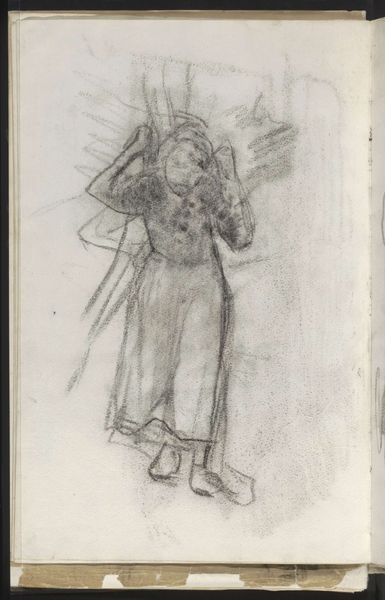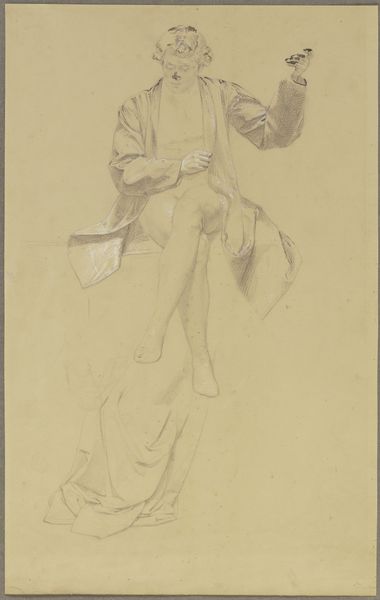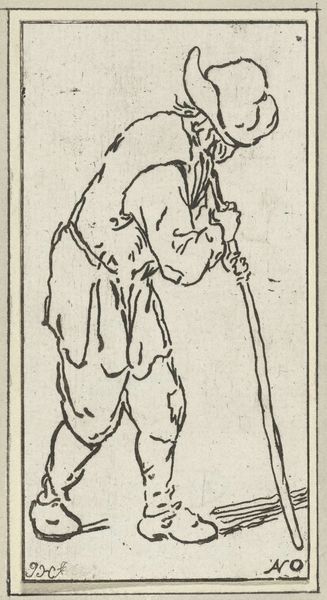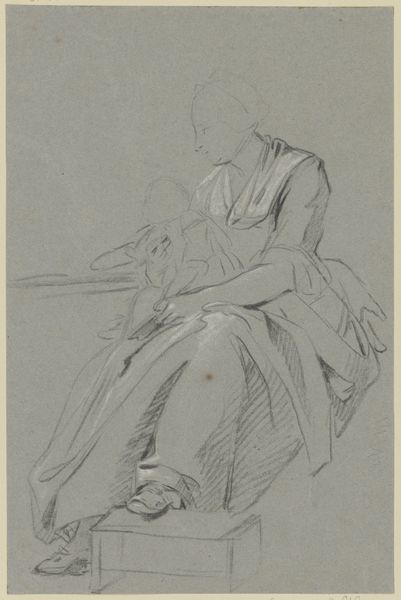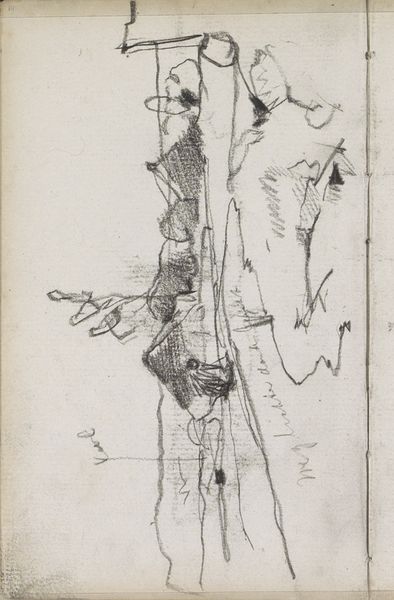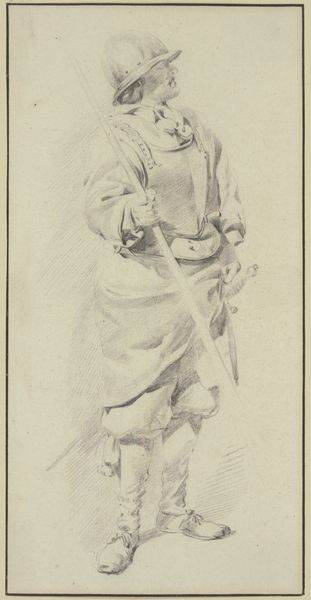
drawing, paper, pencil
#
portrait
#
drawing
#
baroque
#
pencil sketch
#
figuration
#
paper
#
pencil
#
genre-painting
Dimensions: height 295 mm, width 215 mm
Copyright: Rijks Museum: Open Domain
Curator: This work, held here at the Rijksmuseum, is a drawing entitled "Arlequin als barbier" by Cornelis Troost, created around 1738. The figure stands confidently but looks as if he might have just seen a ghost. Editor: It is primarily rendered in pencil and the materiality seems suited to a sketch, or perhaps a study for something larger? The quality of the paper itself is also a factor. You can see the rough texture even in reproduction. It must have been chosen carefully to accommodate the graphite. Curator: The historical context is vital here. Troost was a major figure in 18th-century Dutch theater. His Harlequin character embodies themes of social disruption, and cultural critique, a mirror reflecting anxieties about power and identity. Think of this drawing as part of a larger narrative of societal tensions. Editor: But consider also the craftsmanship. Note the cross-hatching to build tonal range and create depth, especially within the fabric folds. I think that focuses attention on the process Troost followed to bring the figure to life with limited resources. Curator: True, yet how can we detach these choices from the broader implications of caricature? Harlequin has historically been used to mock social outsiders and marginalized figures. The grotesque mask adds to this, forcing us to think about its role in perpetuating prejudice. Editor: That interpretation may work for some, but this approach shows how line, value, and composition combine in service of illustration for performance. The figure appears mid-gesture. We imagine this material’s potential energy for creation onstage, with an insight into the artist’s role as designer and storyteller. Curator: Perhaps it is about all of that and also speaks to intersectionality - these seemingly separate strands of influence that form a complete commentary when considered together, particularly from perspectives of gender, class and cultural heritage. Editor: So, where Troost uses specific methods to capture this character for reproduction as illustration, and our work here serves as something similar, it raises fascinating questions about production in image economies. Curator: Absolutely. Exploring it through various lenses, including power, material culture, social critique, and the labor behind the artwork, yields such a richer experience. Editor: It adds a crucial understanding about art's influence on design that you might miss in a gallery label. Thank you for the perspective.
Comments
No comments
Be the first to comment and join the conversation on the ultimate creative platform.
